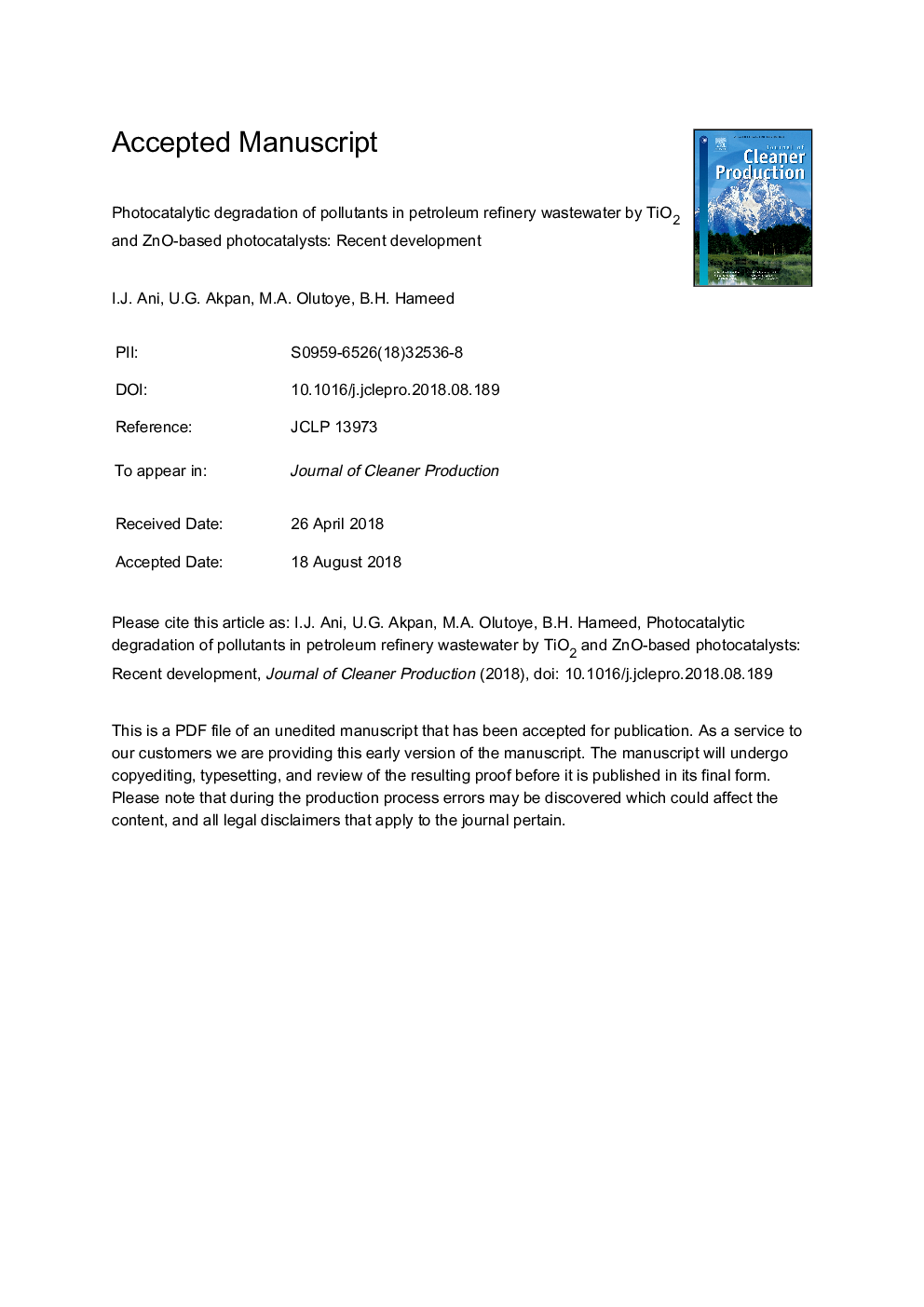| Article ID | Journal | Published Year | Pages | File Type |
|---|---|---|---|---|
| 10156345 | Journal of Cleaner Production | 2018 | 93 Pages |
Abstract
Environmental pollution by Petroleum refinery wastewater (PRW) raises vital call for attention to scientist and industrialists due to its impact on human and eco-system. This manuscript reviews methods on modification of semiconductors, effect of operating parameters, reusability/stability, along with recent development on TiO2- and ZnO-based photocatalysts towards degradation of PRW pollutants. TiO2 and ZnO can be successfully modified to visible/solar light responsive photocatalysts. In-depth knowledge of reaction mechanism between photocatalysts and sorbates, structure formation in modified photocatalysts with respect to generation/mobilization of photo-charged carriers, informs the choice of composition of photocatalysts. Petroleum refineries are yet to benefit from heterogeneous photocatalysis due to some setbacks such as: recovery of photocatalysts for reuse, inability of the catalyst to degrade high concentration of pollutants, inability to handle the complex nature of PRW, and its reusability. Thus, a multifunctional and cost effective photocatalyst with reusability/stability needs more exploration to enable commercialization of the photocatalysts.
Keywords
Related Topics
Physical Sciences and Engineering
Energy
Renewable Energy, Sustainability and the Environment
Authors
I.J. Ani, U.G. Akpan, M.A. Olutoye, B.H. Hameed,
